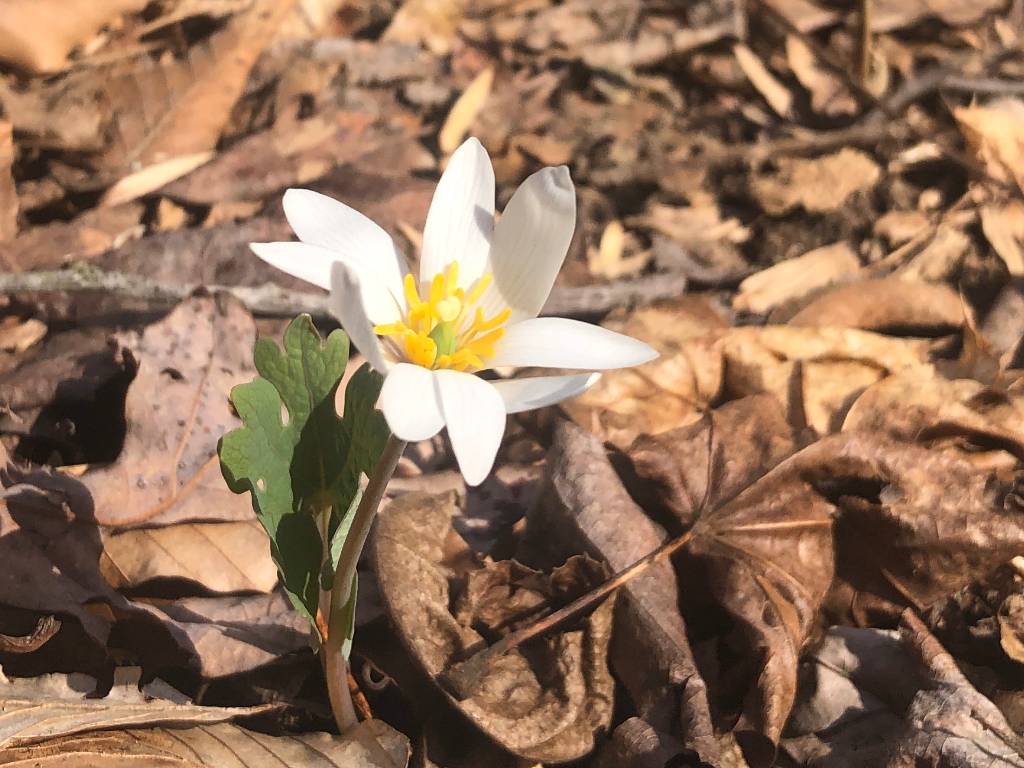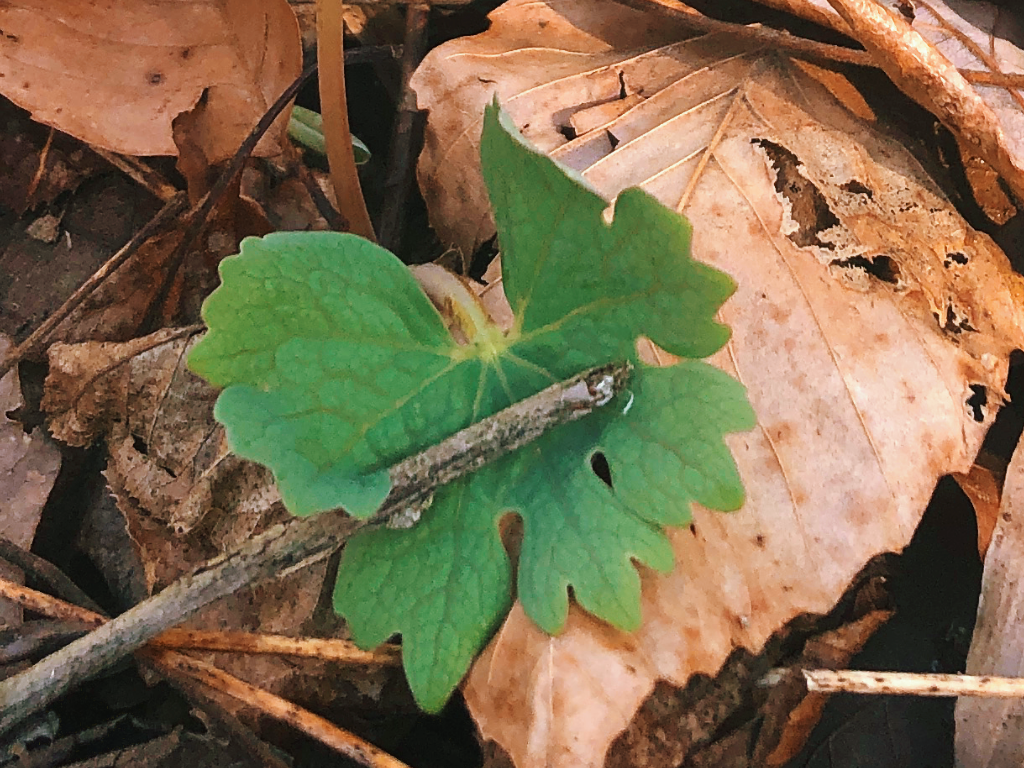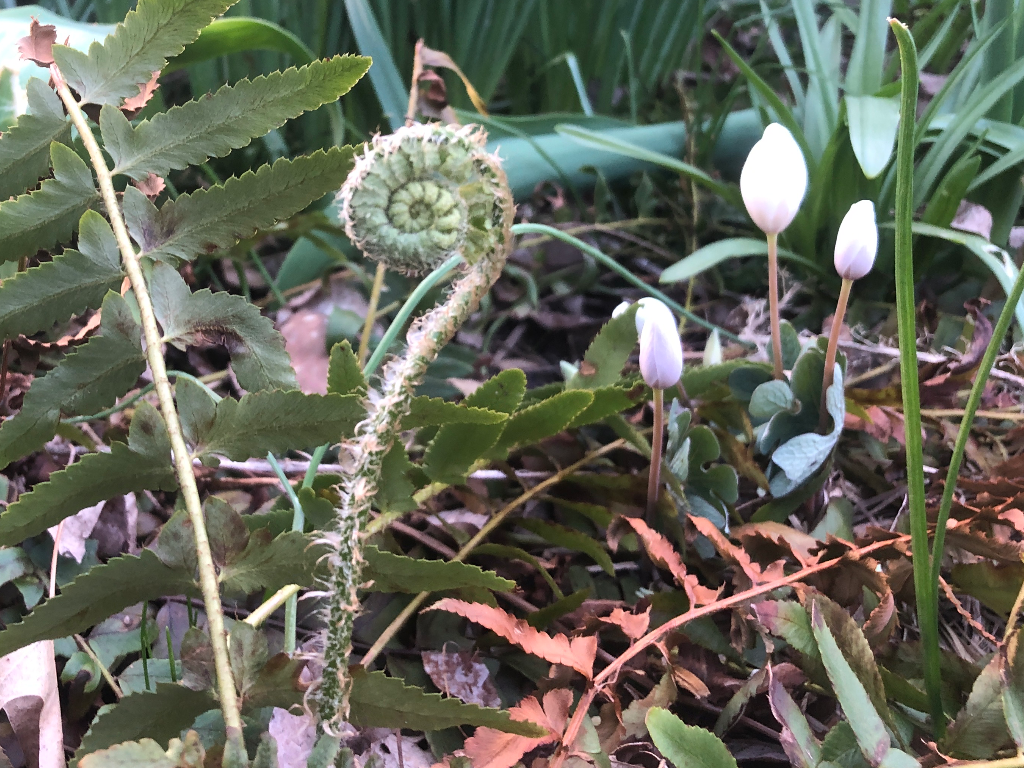Name and Classification
Common name: Bloodroot
Botanical name (genus and species): Sanguinaria canadensis
Plant family: Papaveraceae
Plant Description
- Plant size: 6-12 inches in height
- Plant life cycle: Perennial
- Foliage color: Green, with distinctive lobed leaves
- Plant type: Spring Ephemeral
- Bloom color: White
- Bloom time: Spring
- Seasonal interest: Early spring foliage, striking summer seed pods
- Preferred sunlight: Part shade to full shade
- Soil type: Well-draining, rich woodland soil
- Watering needs: Moderate moisture
Nestled within the woodlands of Maryland, Bloodroot emerges as a captivating native Spring ephemeral. Spring ephemerals are precisely what their name suggests, plants that emerge early on in the growing season, then die back and disappear with the arrival of summer. Think of plants like daffodils and tulips. Bloodroot boasts distinct lobed leaves and delicate white flowers, which bloom in early spring. Its unique name stems from the vibrant orange-red sap that flows from its roots when cut, giving it a captivating and somewhat mysterious allure. Thriving in woodland environments, this plant prefers partial to full shade, well-draining soil, and moderate moisture levels.

Common Problems
Bloodroot is generally hardy, but it may face challenges like fungal diseases. Ensure proper ventilation and well-draining soil to prevent issues.
Care and Maintenance
Caring for Bloodroot involves providing the right environmental conditions. Regular pruning is unnecessary, and fertilization is minimal. Be cautious with overwatering, as this plant prefers a slightly drier environment. While plants will spread and multiply by way of myrmecochory, they also develop rhizomes that can be dug up and divided every few years.
Garden Uses
Bloodroot’s striking appearance makes it an excellent addition to woodland gardens. It can be interplanted with other native perennials that emerge from the ground later on in the season, like Milkweed or Goldenrod. Interplanting creates layers of seasonal interest and a dynamic garden that changes dramatically as the growing season progresses.
The stout nature of bloodroot also makes it ideal for planting in the foreground close to paths and walkways. There it will be visible for enjoyment and practical since the compact plant will not interfere with foot traffic.
Bloodroot is a champion in naturalized gardens. Plant sporadically to recreate a natural woodland setting that can be enjoyed in early spring.
There are also a few cultivated varieties of Bloodroot that boast larger or double blooms.

Eco System Services
- Pollinator Habitat
- Wildlife Food Source
Bloodroot is an interesting and unique plant. It attracts a variety of pollinators, some being what people generally consider pollinator species and other pollinators that reside on the fringe of most gardener’s minds. As usual, bees and butterflies come to visit Bloodroot. In addition to these pedestrian visitors many species of flies, beetles and even ants visit the plant. Ants are very important to Bloodroot because it relies on a method of seed dispersal called myrmecochory, where the ants and plant have a symbiotic relationship. Ants will carry away the seeds so that the plant can spread and reproduce, and in return for the ant’s labor, it is rewarded with a nutritious, fatty appendage called an elaiosome which is attached to each seed.
Planting Suggestions
Complement the beauty of Bloodroot by planting it alongside other woodland gems like Trillium, Virginia Bluebells, Christmas Fern, and Mayapple. This creates a harmonious and visually stunning native plant community.

Cultural Significance
Indigenous communities valued Bloodroot for its medicinal properties, using it for skin ailments and respiratory issues. It is important to note that this information is for educational and entertainment purposes only. Bloodroot does contain toxins that can be harmful if consumed in large quantities. It is important to consult a medical professional before using any plants as a remedy for sickness.
Today, it stands as a symbol of nature’s resilience and the rich history of Maryland’s woodlands.
Sources/References
- Maryland Native Plant Society.
- University of Maryland Extension.
- Lady Bird Johnson Wildflower Center.

